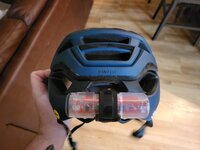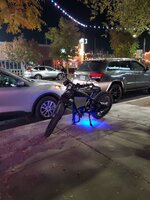Blue frequency is at least 50% higher than red. Violet is roughly 67% higher than red. Red also scatters -much- less than blue -- a big advantage in hazy air. That why the clear sky's blue and why reconnaissance photos are often taken in the near infrared.
Exactly this, but one can't just look at frequency as the colour spectrum perceived by a healthy human eye isn't 100% just frequency, but equivalent luminance.
Again to borrow from web accessibility where we have decades of research, and prior to that research into display technologies, we have the Luma/chroma scale where luma is how bright the human eye treats colours and contrasts.
Basically take red, green, and blue -- the three components best used for outputting the full colour gamut in emissive light, as opposed to reflective where cyan, magenta, and yellow are your primaries. If you rank their luminance -- aka apparent brightness to the eye at the same energy level -- against white:
red == 29.9% the brightness of white
green == 58.7% the brightness of white
blue == 11.4% yadda, yadda.
The eye is most sensitive to green. It's the colour humans can distinguish the most different levels of brightness in. You would think that would mean that green is your go-to choice, and it is for the primary component of legible text. But there's a reason in old displays green ended up eye strain whilst amber -- basically 100% red and 50-70% green -- ended up better.
When it comes to safety colours, it's not just about how bright the colour choice is, it's about what's actually in the environment. In most climes sky blue is everywhere. Green or grey/white tend to be everywhere, so we're conditioned to ignore those colours.
It is thus colours that are rarely natural occurring are used. They stand out because they don't naturally appear as often "out in the wild".
Red, Amber, yellow, blue skewed about 10% on hue towards red/violet.
Aka fire colours, because for some reasons humans are hardwired to react to fire.
Can't imagine why.
Purple can be a bad choice as a lot of different types of colour-blindness can't see it. Same way salmon and green end up looking the same. Not sure why that happens but I suspect it's because purple doesn't really exist. There is no single frequency that creates purple colours to the human eye. It has to be at least two different frequencies, and what we see is actually an interference pattern. Thus I'd suggest sticking to colours that can be generated as a single frequency.


